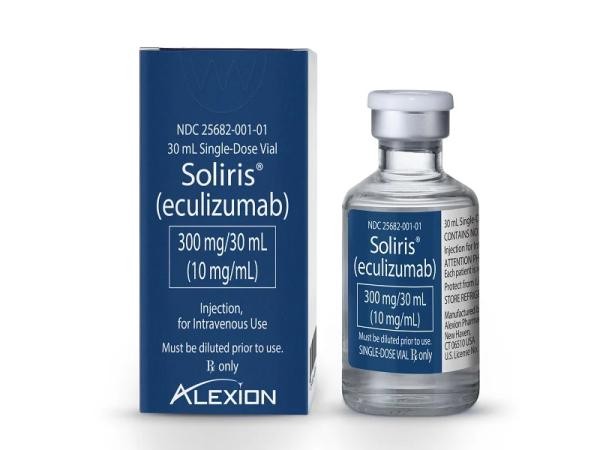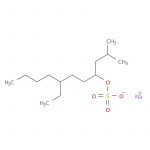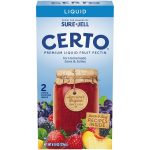
Contents
Soliris
Soliris is a prescription medicine known as a monoclonal antibody. It is used to treat:
- patients with Paroxysmal Nocturnal Hemoglobinuria (PNH).
- adults and children with atypical Hemolytic Uremic Syndrome (aHUS). Soliris is not for use in treating people with Shiga toxin E. coli related hemolytic uremic syndrome (STECHUS).
- adults with generalized myasthenia gravis (gMG) who are anti-acetylcholine receptor (AchR) antibody positive.
- adults with neuromyelitis optica spectrum disorder (NMOSD) who are anti-aquaporin-4 (AQP4) antibody positive.
It is not known if Soliris is safe and effective in children with PNH, gMG, or NMOSD.
Warnings
- Life-threatening and fatal meningococcal infections have occurred in patients treated with Soliris. Meningococcal infection may become rapidly life-threatening or fatal if not recognized and treated early.
- Comply with the most current Advisory Committee on Immunization Practices (ACIP) recommendations for meningococcal vaccination in patients with complement deficiencies.
- Immunize patients with meningococcal vaccines at least 2 weeks prior to administering the first dose of Soliris, unless the risks of delaying Soliris therapy outweigh the risk of developing a meningococcal infection.
- Vaccination reduces, but does not eliminate, the risk of meningococcal infections. Monitor patients for early signs of meningococcal infections and evaluate immediately if infection is suspected.
- Soliris is available only through a restricted program under a Risk Evaluation and Mitigation Strategy (REMS). Under the Soliris REMS, prescribers must enroll in the program. Enrollment in the Soliris REMS program and additional information are available by telephone: 1-888-Soliris (1888-765-4747) or at www.solirisrems.com.
What are the side effects of Soliris?
Soliris can cause serious side effects including:
- Serious infusion-related reactions: Chest pain, trouble breathing or shortness of breath, swelling of face, tongue, or throat, feeling faint or passing out.
If you have an infusion-related reaction to Soliris, your doctor may need to adjust the infusion speed or discontinue Soliris.
The most common side effects in people with PNH treated with Soliris include:
- Headache
- Pain or swelling of nose or throat (nasopharyngitis)
- Back pain
- Nausea
The most common side effects in people with aHUS treated with Soliris include:
- Headache
- Diarrhea
- High blood pressure (hypertension)
- Common cold (upper respiratory infection)
- Stomach pain
- Vomiting
- Pain or swelling of nose or throat (nasopharyngitis)
- Low red blood cell count (anemia)
- Cough
- Swelling of legs or feet (peripheral edema)
- Urinary tract infections
- Fever
The most common side effects in people with gMG treated with Soliris include:
- Muscle and joint pain (musculoskeletal pain)
The most common side effects in people with NMOSD treated with Soliris include:
- Common cold (upper respiratory infection)
- Pain or swelling of nose or throat (nasopharyngitis)
- Diarrhea
- Back pain
- Joint pain (arthralgia)
- Throat irritation (pharyngitis)
- Bruising (contusion)
- Dizziness
- Flu-like symptoms including fever, headache, tiredness, cough, sore throat, and body aches (influenza)
Tell your doctor about any side effect that bothers you or that does not go away. These are not all the possible side effects of Soliris. For more information, ask your doctor or pharmacist.
Call your doctor for medical advice about side effects. You may report side effects to FDA at 1-800-FDA-1088.
What is the dosage for Soliris?
Recommended Vaccination and Prophylaxis
- Vaccinate patients according to current ACIP guidelines to reduce the risk of serious infection.
- Provide two weeks of antibacterial drug prophylaxis to patients if Soliris must be initiated immediately and vaccines are administered less than two weeks before starting Soliris therapy.
- Healthcare professionals who prescribe Soliris must enroll in the Soliris REMS.
Recommended Dosage Regimen — PNH
For patients 18 years of age and older, Soliris therapy consists of:
- 600 mg weekly for the first 4 weeks, followed by
- 900 mg for the fifth dose 1 week later, then
- 900 mg every 2 weeks thereafter. Administer Soliris at the recommended dosage regimen time points, or within two days of these time points.
Recommended Dosage Regimen — aHUS
For patients 18 years of age and older, Soliris therapy consists of:
- 900 mg weekly for the first 4 weeks, followed by
- 1200 mg for the fifth dose 1 week later, then
- 1200 mg every 2 weeks thereafter.
For patients less than 18 years of age, administer Soliris based upon body weight, according to the following schedule (Table 1)
Table 1: Dosing Recommendations in aHUS Patients Less Than 18 Years of Age
| Patient Body Weight | Induction | Maintenance |
| 40 kg and over | 900 mg weekly x 4 doses | 1200 mg at week 5; then 1200 mg every 2 weeks |
| 30 kg to less than 40 kg | 600 mg weekly x 2 doses | 900 mg at week 3; then 900 mg every 2 weeks |
| 20 kg to less than 30 kg | 600 mg weekly x 2 doses | 600 mg at week 3; then 600 mg every 2 weeks |
| 10 kg to less than 20 kg | 600 mg weekly x 1 dose | 300 mg at week 2; then 300 mg every 2 weeks |
| 5 kg to less than 10 kg | 300 mg weekly x 1 dose | 300 mg at week 2; then 300 mg every 3 weeks |
Administer Soliris at the recommended dosage regimen time points, or within two days of these time points.
Recommended Dosage Regimen — gMG and NMOSD
For adult patients with generalized myasthenia gravis or neuromyelitis optica spectrum disorder, Soliris therapy consists of:
- 900 mg weekly for the first 4 weeks, followed by
- 1200 mg for the fifth dose 1 week later, then
- 1200 mg every 2 weeks thereafter.
Administer Soliris at the recommended dosage regimen time points, or within two days of these time points.
Dose Adjustment in Case of Plasmapheresis, Plasma Exchange, or Fresh Frozen Plasma Infusion
For adult and pediatric patients with aHUS, and adult patients with gMG or NMOSD, supplemental dosing of Soliris is required in the setting of concomitant plasmapheresis or plasma exchange, or fresh frozen plasma infusion (PE/PI) (Table 2).
Table 2: Supplemental Dose of Soliris After PE/PI
| Type of Plasma Intervention | Most Recent Soliris Dose | Supplemental Soliris Dose with Each Plasma Intervention | Timing of Supplemental Soliris Dose |
| Plasmapheresis or plasma exchange | 300 mg | 300 mg per each plasmapheresis or plasma exchange session | Within 60 minutes after each plasmapheresis or plasma exchange |
| ≥600 mg | 600 mg per each plasmapheresis or plasma exchange session | ||
| Fresh frozen plasma infusion | ≥300 mg | 300 mg per infusion of fresh frozen plasma | 60 minutes prior to each infusion of fresh frozen plasma |


